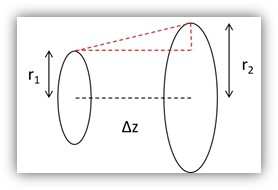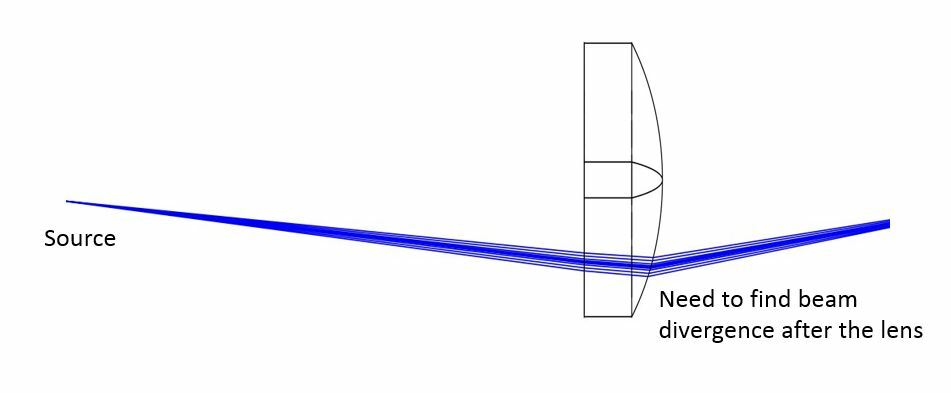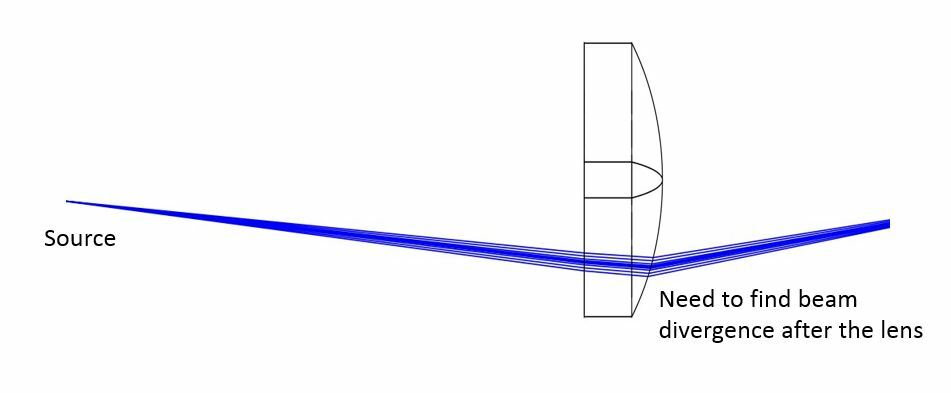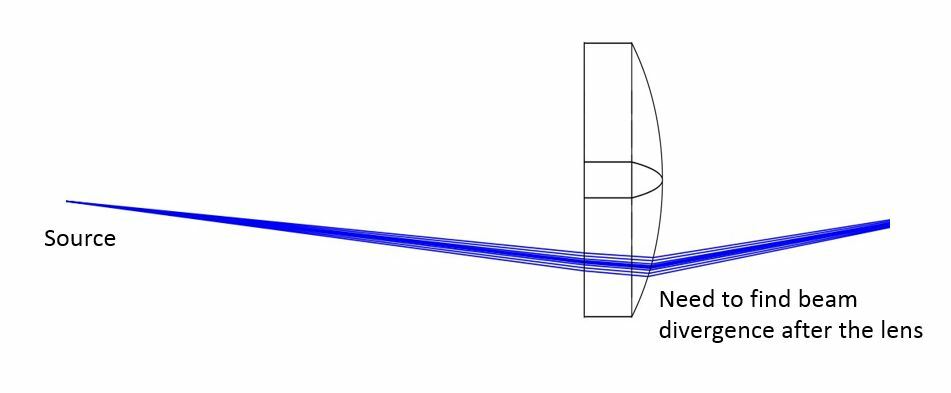In the Physical Optics Propagation, how can I compute the divergence of the beam ? Is there a POPD operand data?
Divergence of a POP beam
Best answer by David Nguyen
In Physical Optics Propagation, the divergence angle cannot be directly returned with a POPD operand data.
The recommended workaround for this is to insert 2 dummy surfaces at different distances, look at their beam size r1 and r2, then calculate the divergence angle based on the beam size variation as it propagates. To compute the beam size using Physical Optics Propagation, the operand is POPD, and the data type is 23 and 24 for beam width along the X and Y directions, respectively.
For a rotationally symmetric system, you only need to use one of them.

Using POPD 23, you can get the beam radius at the first surface r1 and the bream radius at the second surface r2. If the 2 surfaces you measured the beam radius at are separated by Δz, then you can use the following equation to calculate the divergence:

If you know the Δz separation, you can simply use the following operands:
- POPD (beam size)
- GLCZ (z position of surfaces)
- DIFF (subtract 2 operands)
- DIVI (divide 2 operands)
- ATAN (arctangent of operand)
The merit function to compute this divergence angle between surface 6 & 7 could be similar to this:

Enter your E-mail address. We'll send you an e-mail with instructions to reset your password.







